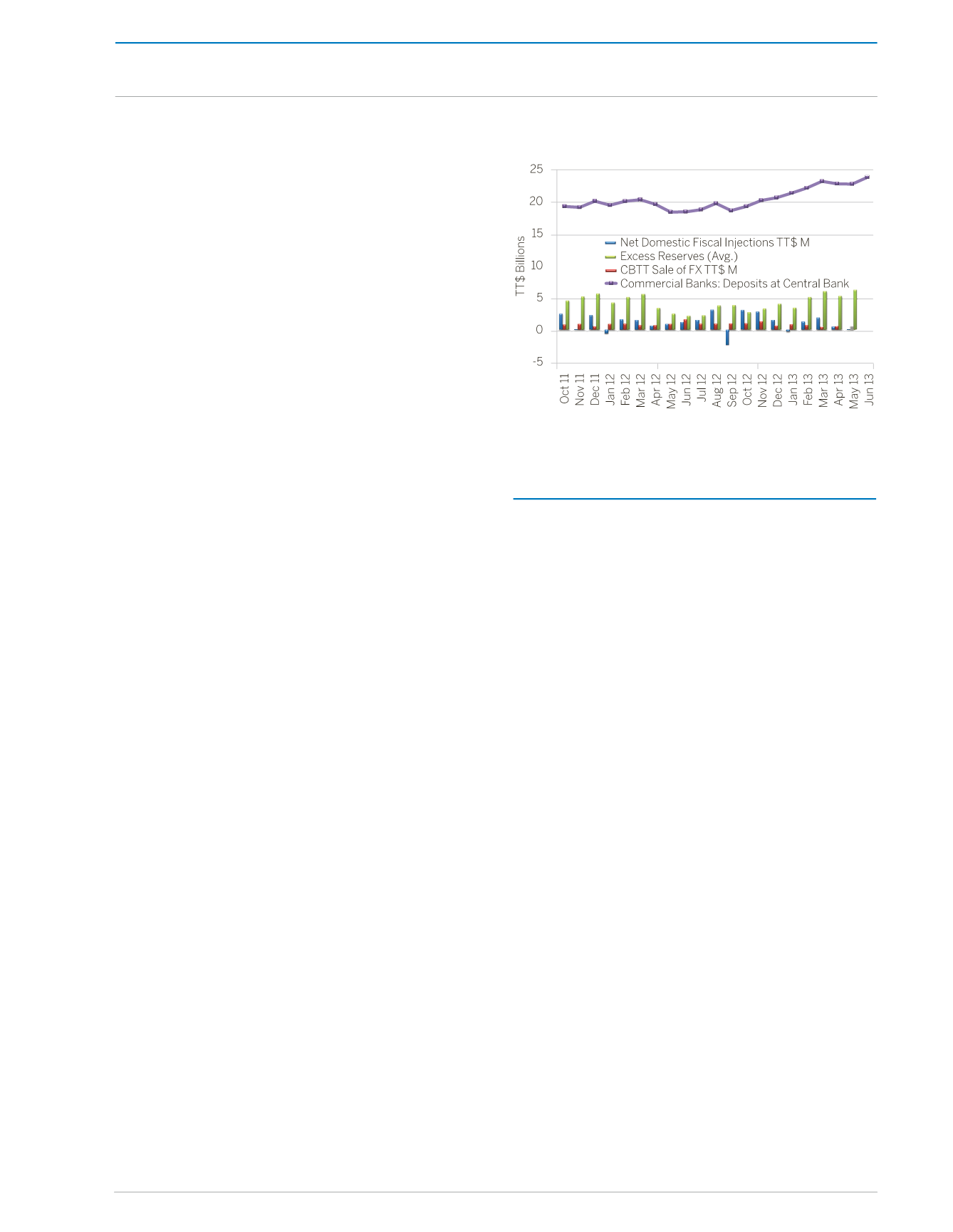
REVIEW OF THE ECONOMY 2013
53
SUSTAINING GROWTH, SECURING PROSPERITY
Figure 17:
Liquidity Indicators
Source: Central Bank of Trinidad and Tobago
FINANCIAL SECTOR
PERFORMANCE
CAPITAL MARKET ACTIVITY
Trinidad and Tobago Securities and Exchange
Commission (TTSEC)
During the review period October 2012 to June
2013 the Trinidad and Tobago Securities and
Exchange Commission’s (TTSEC) regulatory
capacity was enhanced with the passage of
the Securities Act in December 2012. The
improvements contained in this new Act will
assist the Commission in attaining its ultimate
goal of creating an efficient and fair domestic
financial market.
The size of the domestic capital market
stood at TT$273.9 billion as at May 2013. In
relation to the size of the national economy
this represents approximately 178.0 percent of
GDP. The domestic capital market had a total
of 210 registrants as at May 31, 2013 up from
208 registrants at May 31, 2012. The Securities
Act 2012 has introduced several changes in
the classification of some registrants. Traders/
Brokers are now classified as Registered
Representatives and Securities Companies are
now classified as Broker-Dealers.
LIQUIDITY
Liquidity in the financial system as measured
by commercial banks’ reserves held with the
Central Bank increased significantly by 24.0
percent from $19,404.9 million in October 2012
to $23,987.5 million by the end of June 2013,
after having declined by 4.4 percent in the
previous comparative period. On a year-on-year
basis, the average monthly level of reserves of
commercial banks held with the Central Bank
registered strong growth of 29.0 percent from
$18,552.7 million in June 2012 to $23,987.5
million in June 2013.
This build-up of liquidity in the domestic banking
system was fuelled by two factors, mainly the
net domestic fiscal injections which rose by 21.2
percent to $10,865.4 million at the end of May
2013, and the anaemic credit and investment
environment. In attempting to alleviate the
liquidity pressures, the Central Bank withdrew
$200.0million fromthe financial systemthrough
the issuance of Treasury Bills and Notes.
Other liquidity absorptions measures taken
by the Central Bank included the issuance of
a $1.0 billion Treasury bond in May 2013, the
sale of foreign exchange to authorised dealers
in the sum of TTD$6,022.1 million over the
review period, commercial bank’s special fixed
deposits of $1.5 billion and $1 billion matured
and were rolled over in the months of March and
May 2013, respectively. Notwithstanding these
liquidity absorption measures, high liquidity
levels still prevailed in the domestic financial
system. There was no activity recorded in the
repo market during the review period.
THE MONETARY SECTOR


